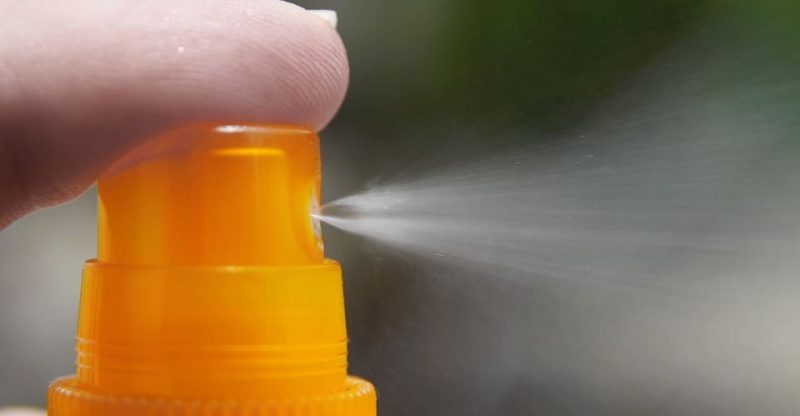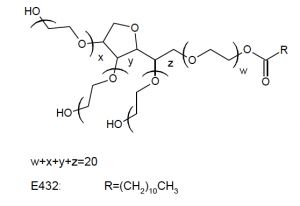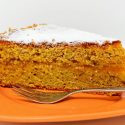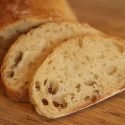What is Tween 20/Polysorbate 20 (E432) ? Polysorbate 20 vs 80 Uses

Two 20 meaning | Production | Uses | Safety | Side effects | FAQs
Polysorbate 20 or Tween 20, the abbreviation of “polyoxyethylene (20) sorbitan monolaurate”, is a nonionic surfactant and an emulsifier used much in cosmetics than in food. The European food additive number for it is E432.
It is distinguished from other polysorbates due to the shortest length of the fatty acid and the highest HLB value.
Two 20 meaning
The number 20 after polysorbate stands for the type of fatty acid linked to the ethoxylated sorbitan part of the molecule, here is monolaurate or lauric acid.
The number 20 following polyoxyethylene means the total number of oxyethylene groups (CH2CH2O) in the molecule of polysorbate 20.
How is Polysorbate 20 made?
Generally, it is produced by the reaction among sorbitol, lauric acid and ethylene oxide.
The manufacturing process is similar with that of polysorbate 80, esterification between sorbitol and lauric acid first to synthesize sorbitan esters and then condensed with ethylene oxide OR by reacting sorbitol and ethylene oxide initially then esterified with lauric acid.
Lauric Acid
Lauric acid (C12H24O2) is a saturated fatty acid found naturally and the following are its common food sources (1):
- coconut oil
- palm kernel oil
- yeast extract
- butter
Commercial lauric acid is not pure and is a mixture of several fatty acids.
Lauric acid is the shortest length compared with the other three following fatty acids that are linked to the ethoxylated sorbitan part to produce polysorbate 40, 60, 65, 80.
- Oleic Acid (C18H34O2)
- Stearic acid (C18H36O2)
- Palmitic acid (C16H32O2)
Specification
| Other Names |
|
| CAS Number | 9005-64-5 |
| Chemical formula | C58H114O26 |
| Molecular Weight | 1228 |
Structure

Image Source
- Hydrophilic groups: long polyoxyethylene groups
- Lipophilic group: lauric acid
Properties
Appearance
A clear, yellow to yellow-green viscous liquid.
Hydrophilic – Lipophilic Balance (HLB)
16.7, oil-in-water (O/W) emulsion
Solubility
- Soluble in water
- Soluble in ethanol, methanol, and ethyl acetate.
What’re the Uses of Polysorbate 20?
Polysorbate 20 is an ingredient that is generally used for its emulsifying, stabilizing, wetting and dispersing properties in food, cosmetics and personal care products.
Food
Different with polysorbate 60 and 80, polysorbate 20 is used less as an emulsifier and stabilizer in food, and if it is in food, it is commonly used as an indirect additive (2) instead of a direct additive.
However, in Europe, it is a direct additive sharing the same applications with other polysorbates. (3)
Cosmetics
Polysorbate 20 functions as an emulsifying and surfactant (4) in cosmetics and skin care products. Also, it acts as a viscosity modifier, dispersing agent, solubilizer and stabilizer to help blend oil and water together.
Mostly, it is a solubilizing agent to distribute fragrance, colors and essential oils into water, if without it, these ingredients and water will separate.
As a high HLB emulsifier, it can also be combined with a low HLB emulsifier (e.g. sorbitan esters) to provide either oil in water, or water in oil emulsion.
Following cosmetic products may contain it:
- skin care products
- hair products
- Bath oils
- shampoos
- body sprays
- face wash
- Lotions
- deodorant
Industrial
Polysorbate 20 can be used as a cleaner and defoamer in industrial uses.
Is Polysorbate 20 Safe to Eat?
Yes, it has been approved as a safe ingredient by the U.S. Food and Drug Administration (FDA) and European Food Safety Authority (EFSA), as well as the Joint FAO/WHO Expert Committee on Food Additives (JECFA).
FDA
Polysorbate 20 can be used as a synthetic flavoring substance and adjuvants in food. (5) (6)
EFSA
Polyoxyethylene sorbitan monolaurate (E432) is listed in Commission Regulation (EU) No 231/2012 as an authorised food additive and categorized in “Additives other than colours and sweeteners” (7).
Safety re-evaluation in 2018
Together with other polysorbates (40, 60, 65, 80), its safety has been re-evaluated in 2018, no concern regarding genotoxicity, carcinogenicity or developmental toxicity and the ADI of 25mg/kg bw/day was established. (8)
UK Food Standards Agency
Categorized in “Emulsifiers, stabilisers, thickeners and gelling agents” (9)
JECFA
Function Class: food additives, emulsifier. (10)
Acceptable daily intake: ADI “0-25mg/kg bw” set in 1973. (11)
What are the possible Side Effects of Polysorbate 20?
The dangers generally lie in ethylene oxide and 1,4-dioxane which may lead to cancer but both assay are very low in polysorbate 20 and are not of health concerns.
- Ethylene oxide: raw material used in the manufacturing process of polysorbates which is carcinogenic to humans” (Group 1)
- 1,4-dioxane: a by-product in the ethoxylation production of polysorbates which is possibly carcinogenic to humans” (Group 2B)
See details the safety of Ethylene oxide and 1,4-dioxane
Frequently asked questions
Is Polysorbate 20 Natural?
No, obviously it is not natural as made from chemical synthesis indicated in the production.
Polysorbate 20 vs 80?
From the molecule, the only difference between polysorbate 20 and 80 is the fatty acid attached to the polyoxyethylene sorbitan part of the molecule, lauric acid in 20 while oleic acid in 80.
The difference of fatty acids makes polysorbate 20 more hydrophilic and thus a weaker ability to emulsify water with heavier oils than polysorbate 80.
From the application, the former is defined as an indirect food additive by the FDA and thus used less in food than the latter, which is a direct food additive. However, polysorbate 20 is used much in cosmetics.
What is it made of?
A mixture of the partial laurate esters of sorbitol and its mono- and dianhydrides and condensed with approximately 20 moles of ethylene oxide and other related components. (12)
Conclusion
Now you may have a knowledge of the emulsifier – Tween 20/Polysorbate 20 (E432), from the following aspects:
- Production process
- Common uses in cosmetics instead of food
- Safety
- Side effects
- FAQs: compare with polysorbate 80, is it natural and made of.
I’m probably forgetting some information of polysorbate 20, and if you have any questions or remarks about this additive, feel free to let me know in the comments.



Hi, this is all really helpful.
This question has been raised as I am about to have a Covid Vaccine but have food allergies. I am really scared and missed 2 appointments. Not good.
Not yet an anaphylactic reactionto food – thank goodness, but swollen fingers with gluten and similar foods.
But I am concerned about the polyglycol that has been used as a carrier? What do you feel about it? Please. Also Polysorbate. I must have come across those in foods surely?
I have had flu vaccines without a problem but I do have allergies to food colouring.
I’d have a bigger allergy to COVID 🙂
Hi Brenda,
No worry, I personally think injected with a Covid Vaccine is a good choice.
Is there a good “natural”, Halal, vegan, non-GMO, emulsifier?